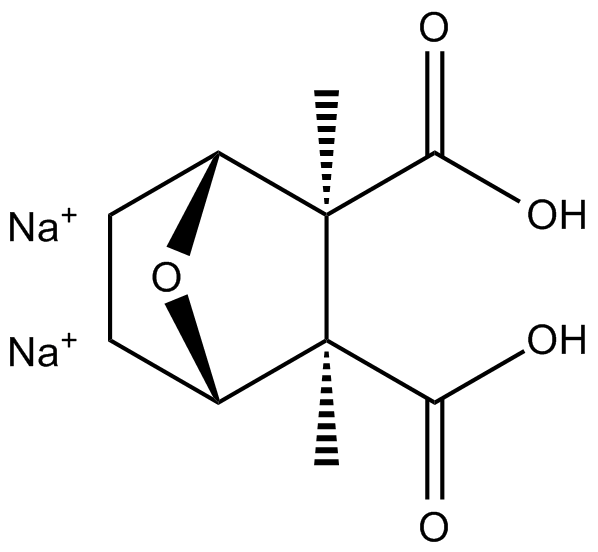Cantharidic Acid (sodium salt) |
| Catalog No.GC12082 |
PP1 and PP2A inhibitor
Products are for research use only. Not for human use. We do not sell to patients.

Cas No.: 1465-77-6
Sample solution is provided at 25 µL, 10mM.
Cantharidic acid, an inhibitor of protein phosphatases, is first isolated from Chinese blister beetles. Cantharidic acid is a hydrolysis product of cantharidin.
Protein phosphatases, account for virtually all of the phosphatase activity toward phosphoproteins, have been involved in controlling glycogen metabolism, glycolysis, gluconeogenesis, fatty acid synthesis, cholesterol synthesis, and protein synthesis. Protein phosphatases participate in protein phosphorylation, a principal regulatory mechanism in the control of almost all cellular processes [2].
In vitro: Cantharidic acid exihibited inhibitory effects on the protein phosphatases PP1 and PP2A with IC50 values of 0.6 and 0.05 μM, respectively. Cantharidic acid showed no effect on the activity of PP2B or PP2C [1].
In vivo: Intraperitoneal administration of cantharidic acid (10 mg/kg) to mice for 45 min caused extreme liver enlargement and congestion. Treatment with cantharidic acid increased hepatic glycogenolysis, elevated blood glucose and hepatic glycogen phosphorylase levels, reduced hepatic glycogen content and glycogen synthase activity. Cantharidic acid endothal decreased microsomal Mg2+-ATPase levels [3].
References:
[1] McCluskey A, Sim A T R, Sakoff J A. Serine threonine protein phosphatase inhibitors: Development of potential therapeutic strategies[J]. Journal of medicinal chemistry, 2002, 45(6): 1151-1175.
[2] Ingebritsen T S, Cohen P. Protein phosphatases: properties and role in cellular regulation[J]. Science, 1983, 221(4608): 331-338.
[3] Graziano M J, Casida J E. Comparison of the acute toxicity of endothal and cantharidic acid on mouse liver in vivo[J]. Toxicology letters, 1987, 37(2): 143-148.
Average Rating: 5 (Based on Reviews and 25 reference(s) in Google Scholar.)
GLPBIO products are for RESEARCH USE ONLY. Please make sure your review or question is research based.
Required fields are marked with *




















